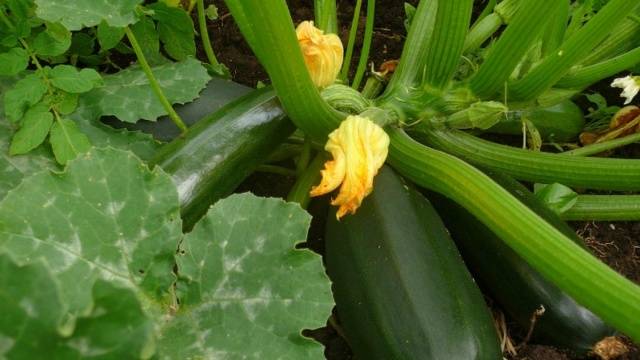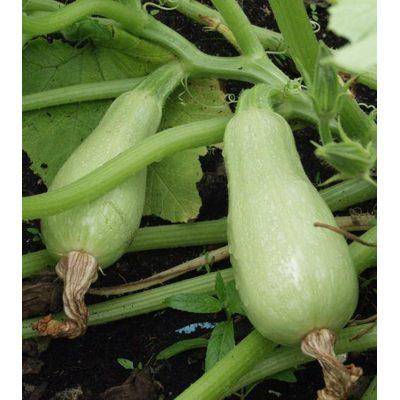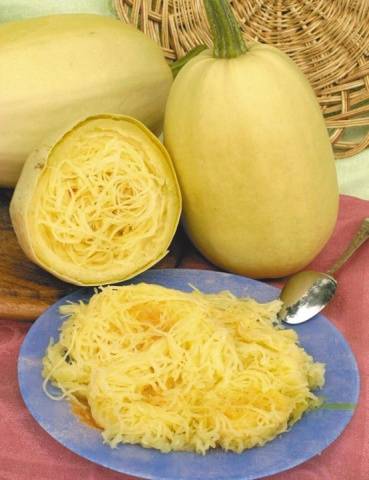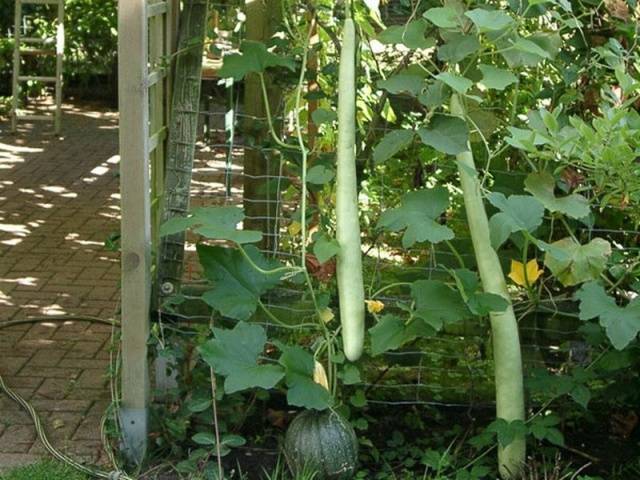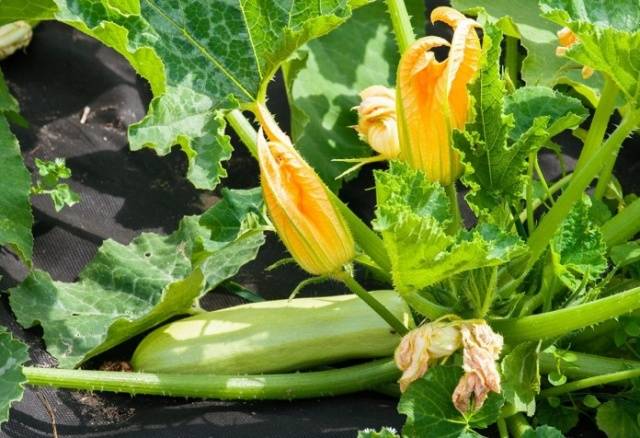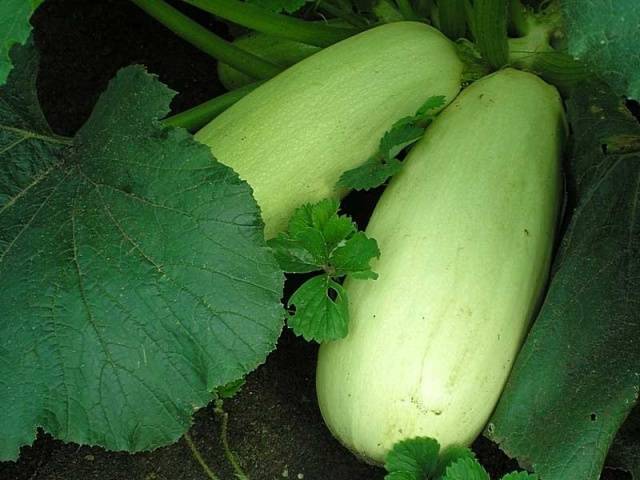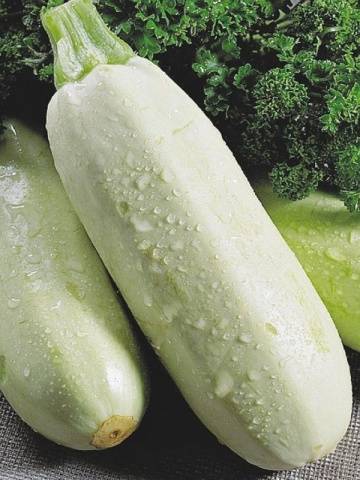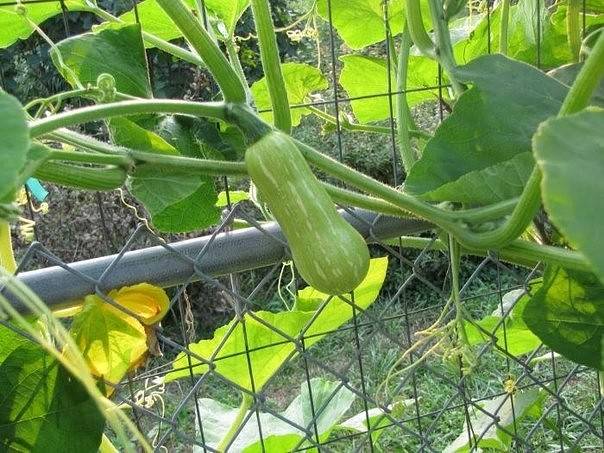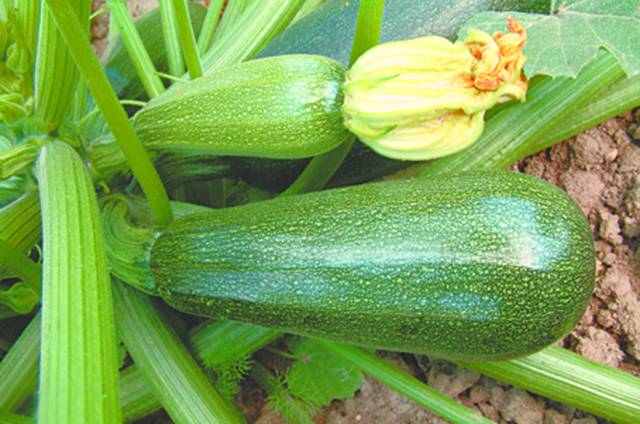Content
Zucchini is a crop that yields good yields even with minimal maintenance. The main thing to do before planting is to choose the right place to plant and prepare the soil. Now the agro-industrial market offers a huge number of varieties that differ in the manufacturing company, appearance, characteristics and properties of the fruit, as well as the appearance of the plant itself. In this article, we will introduce you to varieties of zucchini climbing type.
Climbing zucchini varieties
Mostly common bush marrow varieties, they are convenient due to their compactness. But many gardeners prefer climbing varieties due to the fact that, in their opinion, they give more delicious fruits. Consider climbing zucchini varieties below.
F1 waterfall
This variety is early. The period from the first shoots to harvest is 42 days. The plant is single-leafed. Ripe fruits of cylindrical shape are green and smooth, the weight of one is about 900 grams. The presentation is very good. The pulp is white and dense in structure. Zucchini of this variety are intended for direct consumption and for preparation. Its value lies in its resistance to powdery mildew and bacteriosis.
Karam
This is a climbing plant of not very pronounced shape. This variety is early ripening, fruit ripening period is 35 days. Ripe fruit is light green and cylindrical in shape, the weight of the fruit is up to 550 grams. The pulp is distinguished by a pale pink color and an unobtrusive melon aroma. After pollination has occurred, from three to five ovaries appear on the plant simultaneously, and the total yield per season is more than 11 kg per 1 square meter. Karam is planted only with seedlings, and when harvesting, the lower leaves of the plant are removed.
Spaghetti Raviollo
A very interesting variety thanks to its pulp, which, after steaming or in water, breaks down into a kind of fiber, which looks very much like pasta. This variety is climbing type with long branches. Such zucchini develop well in hot summer. Fruits ripen for a very long time, about 120 days after germination. The ripe fruit looks like a cylindrical pumpkin 20 cm long and weighing up to 1 kg. One plant is capable of producing 5-6 kg of fruit per season.
Aral F1
Quite an early variety, producing ripe fruits 35 days after germination. The crop has a semi-venerable shrub that is open enough to harvest mature squash without hindrance. The variety has medium internodes and green dissected leaves. Fruits at the stage of maturity are slightly ribbed, rather smooth, cylindrical, light green in color with a small amount of white spots on the surface of the skin. Zucchini grows in medium size, up to 18 cm long and weighing about 800 grams. The flesh of this type of squash is tender and moderately dense with elliptical seeds and a creamy shade. The fruits keep very well after being removed in the cellars. The culture is resistant to various kinds of viruses, so the crop can be harvested for a long time and regularly.
Lagenaria long-fruited (Vietnamese zucchini)
This plant is intended only for open ground with the possibility of tying lashes. The culture is quite interesting, as it is somewhat similar to lianas with fluff along the entire length of the trunk. The leaves are pentagon-shaped and corrugated. In the axils of the leaves there are flowers that open only at night.
The fruits of this variety are light green in color, and their length reaches 2 meters.But, what is especially interesting, you can cut off the desired part from such a zucchini, and the rest will be covered with skin in the place of the cut and will grow further. Vietnamese zucchini can be eaten only while it is young, if the skin hardens, then it will need to be completely removed, and food is prepared from the remaining pulp.
Seeds are planted directly into open ground. Lagenaria is undemanding to leave, the soil she needs is ordinary, moderately fertile, watering is regular, as the soil dries.
Long-fruited
This variety is also referred to as early ripening with a ripening period of about 45 days. The plant is a bush with short whips. A ripe fruit is characterized by a corrugated base and smoothness over the entire surface. Zucchini color is pale green, weight - from 1 to 1.5 kg. The pulp is white with a greenish tinge, dense structure, but at the same time tender and slightly sweet. The dry matter content is 5%, which gives the pulp an excellent taste.
Nemchinovsky
This early ripening and quite fruitful hybrid produces fruits weighing up to 1.5 kg. Fruiting occurs 38 days after the first shoots. Zucchini of this variety are pale green in color and up to 30 cm long. The pulp has a delicate taste and juicy structure. The variety has a consistent yield. The disadvantage of this variety is the possibility of damage by powdery mildew in wet weather, but the culture is unpretentious in care and cultivation.
Gribovskie 37
This variety belongs to the mid-early species with a fruiting period of about 50 days. The plant is of a strongly branching type with pentagonal leaves of a slightly dissected shape. Ripe fruits are picked from a medium-sized, cylindrical, light green bush. The pulp is snow-white with a slight yellow tint, has a pleasant taste and delicate aftertaste. The skin of the fruit is quite hard.
This variety perfectly tolerates all kinds of plant rot, powdery mildew and bacteriosis. Gardeners say that a lot of space is needed to grow this plant, since it has quite sprawling whips.
Another climbing zucchini in the photo is shown below:
Helpful Tips for Growing Healthy Climbing Zucchini
Although zucchini is an unpretentious crop, sometimes situations may arise when a plant dies, and how to help it and how to preserve already having fruits is not clear. The following tips will help in some situations to preserve the crop or at least prevent contamination of other crops:
- After the appearance of a new ovary, it immediately rots. This case indicates that there is not enough space for the zucchini and it is too stuffy, you need to ensure proper and constant ventilation.
- Irregular shape of the fruit with a spherical end. This situation suggests that the plant lacks potassium. You can add potassium to the soil according to the following recipe: sprinkle the soil around each plant with ashes at the rate of half a liter per plant, and in the evening spray the Uniflor-Bud culture at the rate of 2 teaspoons per 10 liters of water.
- Narrowed lighter tip of the fruit. This indicates a lack of nitrogen. To prevent the problem from reoccurring, you need to feed the soil with herbal or manure infusion. Moreover, manure is suitable for both cow and bird droppings.
- Excess moisture manifests itself by rotting the tips of ripe fruits. You don't need to water the plant as often and give the soil time to dry.
Fruits that are too small, if they should be larger in the variety, do not need to be harvested until they are fully ripe. They contain a lot of nitrates. - It is best to cut zucchini in the morning, as they stay fresh much longer.
- If fruiting is delayed, then the reason for this is the lack of sunlight.
Even more useful information about zucchini in the video:
Zucchini are very healthy vegetables. They provide the body with vitamins, regardless of the selected and planted variety. They do not require special care for themselves, but they have high taste. This is especially noticeable when using climbing zucchini.
